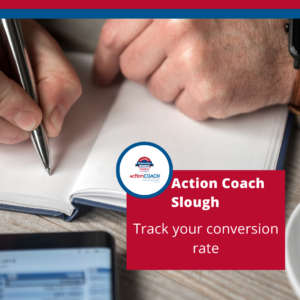While KPIs definitely help measure the success of your business – from lead campaigns, engagement, brand awareness, to sales, and many more, there is a whole practical method of determining success in a different light.
Quantified metrics indicate where your business is and how far you are from your business goals. Let’s zoom the picture out and define the real factors – real people, real situations, real problems you are facing and dealing with day-to-day.
From a practical standpoint, these six tips are key to measuring your marketing success.
1.Ask people how they know you as a brand, NOW!

No better time than now.
Make a tally sheet and list down all the ways and platforms anyone could have heard about you – prospects, leads, customers, practically anyone. Include marketing materials and social media accounts like newspaper or website ads, direct mail and referrals, flyers, phone directory, Pinterest, Facebook, Instagram, etc.
Start asking your customers or anyone who is interested in your products or services where they first heard about your business. Tally the results and keep track. At the end of the month, record the figures.
This practice results in an easier decision-making process.
2. Cut, modify, and increase.

Over time, you will see the outcome of your test and measure. Check which one gives the least favorable results. Low response equals low profit margin. If you are paying for ads that get a low response, it means your sales does not pay for the ad.
You have one other option – improve your ad. Great ads ensure a great response.
How do you make this task simpler? Where do you even begin?
First, pull out your past ads and recall how well each one worked. Pick the best ones and note what you think gave them their edge. Then, read a couple of books or materials for ideas and thoughts. Last, have a look at what your competitors do. What ads do they run and how often do they run it? Take note of what you can learn from them.
Run through this process with each marketing material that you currently use. Cut, examine, modify. Bear in mind that the real test of a marketing strategy is whether it pays for itself. If you run an ad that costs $500 and makes you $1200 in profit, it’s a good ad.
Go through each of the strategies you are working on as well. Scrutinize and find out why these are producing favorable results and the other ads aren’t. Name the one important element of each ad that makes it attractive. This strategy will give you more knowledge about your business.
Next, figure out a way to use each effective strategy on a larger scale. For example, your flyers bring more sales. Drop more flyers. That should bring more sales. But whatever that effective ad is, don’t change antyhthing. Just do the exact same thing but on a larger scale.
3. Experiment for another two weeks.

Record the inquiries with the new revised strategies and see the difference from your old strategies. Compare this with how much you spend on marketing. You might find that working on the same strategy on a larger scale provides greater sales. Otherwise, return to the original size.
4. Track your conversion rate.

Conversion is the number of prospects that become clients… At times, poor marketing might not be the problem at all – ineffective sales technique is. You might have a full leads list but zero conversion.
Ask yourself this question – how many leads do you turn into sales? How can you increase the conversion ratio?
Simple. Offer the customer a solution to their problem. Give a reason why they need to buy your product or service. Price is not the only factor a customer buys from you. If you were a customer and you see a cheaper product but were not entertained well, you might wanna ditch the product despite the lower price. You might wanna go for the pricey one that has excellent support and after-sales service.
5. Reinforce.

Give it a least a month, just working on your leads-to-sales conversion. An effective conversion strategy coupled with lots of leads from a larger scale successful marketing plan should boost your business.
6. Experiment and expand.
 Pull out of the drawer all those marketing strategies you examined and modified? Give them a run, one at a time. Track each result meticulously.
Pull out of the drawer all those marketing strategies you examined and modified? Give them a run, one at a time. Track each result meticulously.
Record exactly how many leads it brings, and how many of those convert into sales. Compare that with the marketing expense, and evaluate the efficiency of the strategy.
If efficient, add it to your list of ongoing strategies. If not, try again using different variables, medium, offer, look, etc.
You will develop throughout the process a collection of marketing strategies that work. Reject all the costly ones and those that don’t give back a good revenue. Now that’s a business success formula!
If you would like to know more about dynamic strategies for small to medium businesses that actually work, follow me on Instagram simac.konkader.





